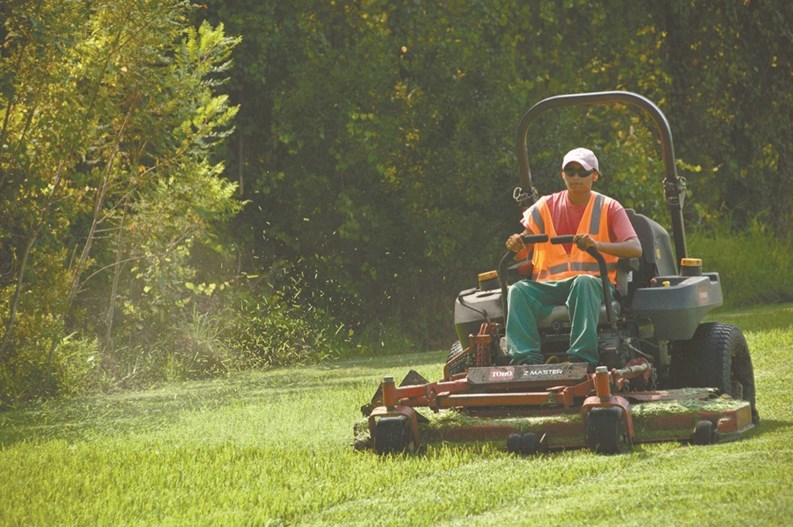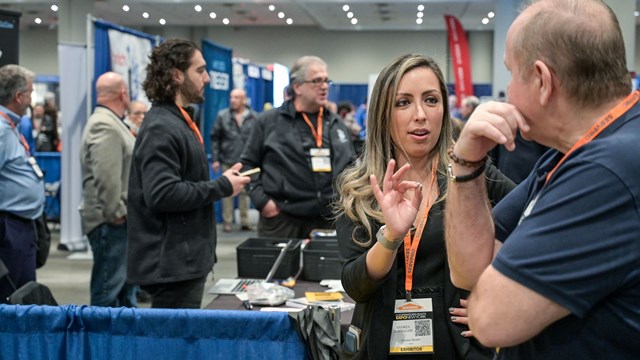Florida is known for sunshine, palm trees, and sandy beaches. At first glance, lawns and lawn care, outside of luxurious golf courses, may seem to be non-issues for many Floridians. But step away from the beaches and Floridians, like most Americans, have a love affair with lush green turf.
Where the grass is greener, in Florida’s sub-tropical climate, keeping it that way can be the challenge. After all, South Florida pretty much experiences nine months of summer, and a very short, mild, dormant season that passes for winter. When you factor in a rainy season, and the very real possibility of drought, it is easy to understand that putting down sod is one thing, and keeping it maintained and growing is an entirely different issue.
Condominium and homeowners associations often find landscaping and lawn care the largest line item in the budget after insurance. Fortunately, the Florida climate also attracts many lawn and landscape professionals to take the guesswork and unnecessary expense out of installing and maintaining attractive and healthy turf. Landscaping adds to a property’s real and perceived value, not only for current residents, but for those seeking a new address to call home.
Nothing ups the ante on curb appeal quite like well-maintained landscaping and colorful plants.
Most of Florida’s population has migrated to the Sunshine State, so board members, property management teams and residents in general often find that what works well in another part of the country is not effective for installing or maintaining a lush landscape in Florida’s climate. Additionally, pest and weeds here present a different challenge compared to most other states. If there is ever a time to call an expert, it is when current or upcoming lawn and landscaping issues need swift, cost-effective attention.
Look at the Long Term
Scott Prinz, owner and president of LandKeepers, Inc. in Miami, likes to get involved, literally at the ground level. After 27 years in the Miami-Dade area, Prinz knows this is the best way to avoid building in problems and extra expense when installing turf or landscaping. With new construction, or a landscape remodel, it is easy to gravitate towards the ‘wow’ factor or the most budget-friendly options and overlook the hidden long-term cost of maintenance.
A landscape architect is trained to deliver an overall plan complete with blueprints, but to understand the ongoing expense associated with maintaining that plan, ask a landscape professional with hands-on experience. “One example of built-in cost is lots of small areas requiring hand tools and additional manpower,” Prinz explains. “A larger expanse of turf is easily and more efficiently managed.”
Prinz estimates that 95 percent of the properties in South Florida choose St. Augustine over other grasses and groundcovers. St. Augustine grass is the most common turf used for condominiums and private homes. It is a durable, attractive grass that spreads by sending out above-ground runners. It is easy to restrict and control the spread of St. Augustine by cutting the runners back during regular maintenance. Prinz rarely sees lawns grown from seed in the Miami-Dade area. “It is possible, but most people want to see a finished lawn immediately,” he says.
Bahia is common on expressways and roadways because it is extremely drought-tolerant and helps prevent erosion. The most “high end” grass is Bermuda, and it is typically found on golf courses, and other small areas to achieve a showcase effect. “Bermuda is high maintenance,” warns Prinz. “It must be contained in a small area or with a permanent border or curbing, because it will travel by sending underground runners effectively invading and disrupting other landscape areas.”
Adam Baker, CEO of Broward Landscape, Inc. agrees that St. Augustine is the most common turf choice for the South Florida region. “It offers a dense, green, lush look that is quite popular, it is quick and easy to install, and St. Augustine thrives in tropical and subtropical regions.” Baker and his crew will install a lawn using sod or seed but he cautions either method comes with its own issues. “It is best to speak with a professional before taking on the task of growing a new lawn,” says Baker, whose company has more than 16 years of experience in both commercial and residential landscaping, covering everything from soil testing to expert designs.
Once the turf is in place, there are a multitude of issues to consider to keep the lawn lush and healthy. Prinz and Baker agree water is crucial, and it can be a delicate balancing act. High heat, drought, and local watering restrictions can complicate a routine and require careful adjustments. Over-watering is not an option or a solution; it can lead to fungus, causing increased lawn damage and expense.
And when a lawn is stressed, it shows, robbing residents and perspective residents of an attractive vista. Stressed lawns are at risk for insects and weeds such as Dollar Weed, sage and Florida Pusley, the most common weeds in South Florida. A regular routine for weeding and feeding can help, but these weeds can be difficult to control once they take hold in a lawn. Over-watering can be part of the problem, since weeds thrive in a moist environment, but winter is a natural season for weeds here in Florida as well.
Prinz and Baker are in total agreement when they encourage putting a professional in charge to protect your lawn and your investment. “The most common mistake people make in lawn care is underestimating the effort required to keep a lawn properly maintained,” says Baker. Prinz also sees over-mowing weakening turf and increasing vulnerability to disease. Landscaping is so much more than mowing weekly or bi-weekly. A professional will know when skipping a week on the mower is actually beneficial.
An additional landscape problem Prinz has noted is excessive shade resulting from another common mistake: over-planting, and/or improper placement of trees and plants. When over-planting is an issue, plants and trees are forced to compete for limited resources. Keeping trees well-trimmed will help with any shade issues, but nothing short of removing the offending plants will fix an aggressive root system. Baker suggests, “Keep watering in check—too much or too little can lead to a host of problems. Address issues such as disease, pest, and weeds as soon as they are noticed.” Prevention is always the best course of action, since lawn problems can develop quickly and spread rapidly in a sub-tropical climate.
Weed and Feed
When it comes to weeding and feeding the landscape there are a host of environmentally-friendly products on the market. In the hands of a certified lawn care professional, these products will enhance the lawn and landscaping. At no time should an untrained person apply these products since there are so many variables involved with a correct application. For the best results with weed control, Baker at Broward Landscaping recommends using a pre-emergent herbicide during the winter months (late January through early February), followed by a post-emergent herbicide throughout the summer when the grass is moist. Fertilizer mixtures can vary greatly; the composition will dictate the best time to apply the chemicals for optimum results.
Typical pests in South Florida include, but are not limited to, chinch bugs and the white fly. “The average person may not realize some insects are more active during the winter months,” says Prinz. “The white fly is one example of such an insect. We tend to get comfortable with the knowledge we have and then apply it to all insects, but the white fly is not dormant in the winter months in Florida.”
A recent landscaping report suggests the average one-acre lawn costs $700 and requires 40 hours of labor annually. Prinz believes that figure is “amazingly low” and would expect it be more than double for the area he services. Baker has noted that pricing varies depending on the services and specific needs of any given community. “What is good for property A is not necessarily good for property B,” he states. It is important that each property receive a customized estimate and evaluation for the services recommended.
Prinz and his crew typically spend time checking for anything different or unusual for the properties they service. Swift action can prevent an infestation of pest, or fungus, and save both property appearance and valuable funds. Lawn maintenance should be on a regular schedule that includes both routine care and special preventative and restorative measures as needed.
John Pearson, owner and president of Stardust Farms in Lutz, often has clients contact him after spending time on the Internet. Sometimes it is a re-education process for this 25-year veteran landscaper and wholesaler. Pearson concentrates on the growing side of his business and raises trees and plants for the entire state of Florida. “Many people do not realize the pretty photos on the Internet may not translate to their personal needs. A client will order a particular plant, and then tell me it doesn’t look like my photos when it arrives. Trouble is, it wasn’t my photo.” Often times, most times, a photo on the Internet will show a tree or plant at peak season, and by the time it ships it may be dormant and not as attractive as it was on the computer. And without the expert guidance of a landscape professional, the plant seen online may not be appropriate for the location a client has in mind.
When shopping for expert lawn maintenance advice or services, going online is an excellent way to do the homework and research. Baker notes many lawn maintenance companies offer free consultations and design options, but use the Internet as a tool and then call in the professionals. Landscaping and lawn maintenance are not areas for even the most robust HOA or COA to undertake. The climate conditions, pest, and weeds native to Florida are challenging for even a seasoned professional. Hire the best company available to your association and then relax and enjoy the view.
Anne Childers is a freelance writer and a frequent contributor to The South Florida Cooperator.





Comments
Leave a Comment